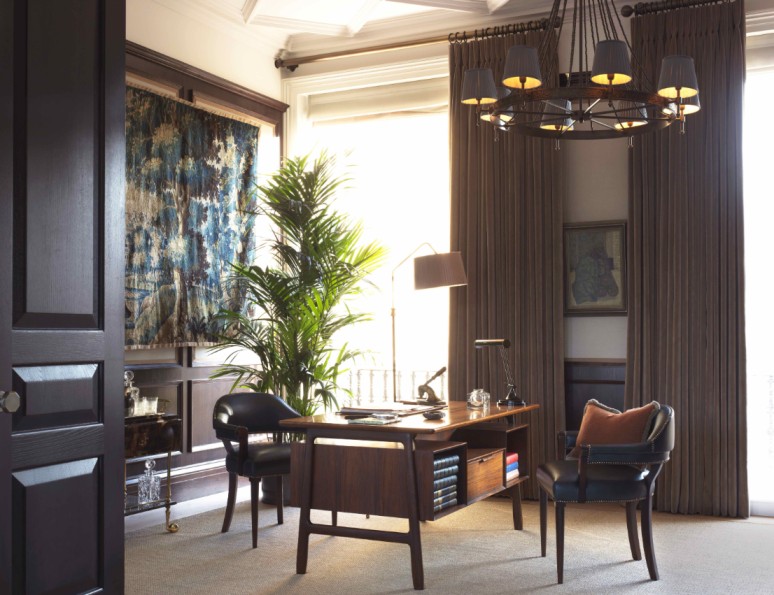The United Kingdom has long been a beacon of cultural and artistic innovation, and its interior design landscape is no exception. Over the centuries, British interior design has evolved from the opulence of Georgian mansions to the sleek minimalism of contemporary urban lofts. Today, it represents a harmonious blend of tradition and modernity, reflecting both the country’s rich heritage and its forward-thinking ethos.
Historical Roots: From Georgian Grandeur to Victorian Elegance
British interior design has deep historical roots, with each era contributing its unique aesthetic. The Georgian period (1714-1830) is renowned for its grandeur and symmetry, characterized by high ceilings, ornate plasterwork, and elegant furniture. Georgian interiors often featured muted color palettes and an abundance of natural light, aiming to create a sense of order and tranquility.
Following the Georgian era, the Victorian period (1837-1901) introduced a more eclectic and ornate style. Victorian interiors were characterized by rich colors, heavy drapes, and intricate wallpapers. This era embraced a more is more philosophy, with rooms often filled with a variety of textures, patterns, and collectibles, reflecting the British Empire’s vast reach and cultural influences.
The 20th Century: Art Deco to Mid-Century Modern
The 20th century brought significant changes to British interior design, influenced by global events and artistic movements. The Art Deco style of the 1920s and 1930s introduced geometric shapes, bold colors, and luxurious materials like lacquer and chrome. This period was all about glamour and sophistication, with interiors designed to make a statement.
Post-World War II, the mid-century modern movement gained popularity. This style emphasized simplicity, functionality, and a connection with nature. British designers embraced clean lines, organic forms, and new materials like plywood and plastic. The focus shifted to creating practical yet stylish living spaces, a philosophy that continues to influence contemporary design.
Contemporary Trends: Sustainability and Smart Living
Today, British interior design is a dynamic and diverse field, blending traditional elements with modern innovations. One of the most significant trends in contemporary British interiors is sustainability. Designers are increasingly prioritizing eco-friendly materials, energy-efficient appliances, and sustainable practices. This shift reflects a growing awareness of environmental issues and a commitment to responsible living.
Smart technology is also transforming British homes. From intelligent lighting systems to voice-activated assistants, modern interiors are becoming more integrated with technology, enhancing convenience and efficiency. However, despite these advancements, there is a strong emphasis on maintaining comfort and warmth, ensuring that homes remain inviting and personal spaces.
Iconic British Designers and Influences
Several iconic British designers have left an indelible mark on the world of interior design. Terence Conran, founder of Habitat and The Conran Shop, revolutionized home furnishings with his focus on contemporary design and affordability. His influence can still be seen in the clean, functional aesthetics of modern British homes.
Kelly Hoppen, known for her signature style of neutral tones and luxurious textures, has also played a pivotal role in shaping contemporary British interiors. Her work blends Eastern and Western influences, creating serene and sophisticated spaces.
The Future of British Interior Design
Looking ahead, the future of British interior design appears to be a continuation of the current trend towards sustainability and innovation. As environmental concerns become increasingly pressing, designers are expected to explore new materials and techniques that minimize ecological impact. Additionally, the integration of smart technology will likely continue to evolve, making homes more adaptable and efficient.
Moreover, there is a growing appreciation for the unique character and history of British homes. Many designers are focusing on renovating and repurposing historic properties, preserving their heritage while updating them for modern living. This approach not only honors the past but also creates unique and inspiring spaces that tell a story.
British interior design is a testament to the country’s ability to blend tradition with modernity. From the grandeur of Georgian and Victorian eras to the sleek, sustainable designs of today, the UK’s interior design landscape is rich and varied. As it continues to evolve, it remains a reflection of both the nation’s heritage and its innovative spirit, offering a glimpse into the future while honoring the past.




Leave a Reply